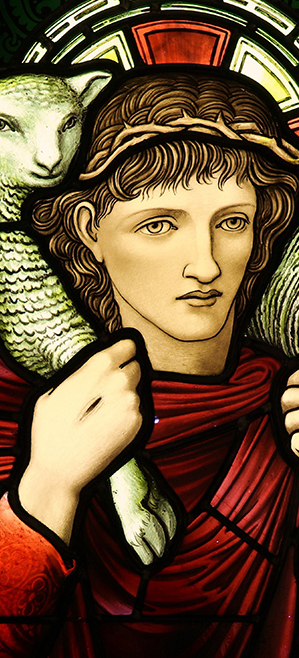
Holy Trinity Church, Frome: Burne-Jones
19th Century
Holy Trinity Church, Frome, Somerset.
Conservative repairs to the St. Matthew (nV) and The Good Shepherd (nVI) windows, and the provision of visitor interpretation material.
Holy Trinity church was built between 1836 and 1838 under the direction of architect H.E.Goodridge. The nine windows in the North, West and South elevations were designed by the Pre-Raphaelite artist Edward Burne-Jones. They span the entirety of his career in stained glass (1866 – 1896) and were manufactured by Morris & Co. between 1880 and 1903. These windows with their strongly rendered figures, beautifully designed foliate backgrounds and strong, rich colours are outstanding in their quality, and together they form what is undoubtedly the most impressive collection of Burne-Jones/Morris and Co. stained glass in the South West.
Upon inspection of the stained glass by HWG, Window nV (St. Matthew) showed signs of weakness and significant distorting of the lead matrix in some of the panels, whilst Window nVI (The Good Shepherd) was severely bowed throughout the entire window, cracking glass as a result. This required conservation works to be carried out in the workshop for both windows. The glass paint was found to be well fired and stable, and the general layer of dust and dirt on the surface of the glass was cleaned with cotton wool swabs and a 50:50 mix of ethanol and de-ionised water. On site several new horizontal support bars were added to improve the window’s load-bearing performance and to prevent the panels bowing in the future.
Our work at Holy Trinity, Frome, was carried out as part of a larger renovation and modernisation of the building in order to engage a modern congregation. Crucial to this was our provision of interpretation material detailing the history of the stained glass in the church, The Arts and Crafts Movement, and the conservation work carried out to the stained glass. This was produced in the form of a published book, for sale in the church, and a large free standing display, positioned at the West end of the church.





